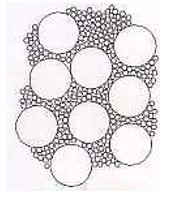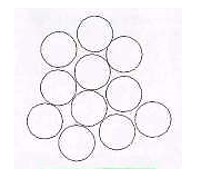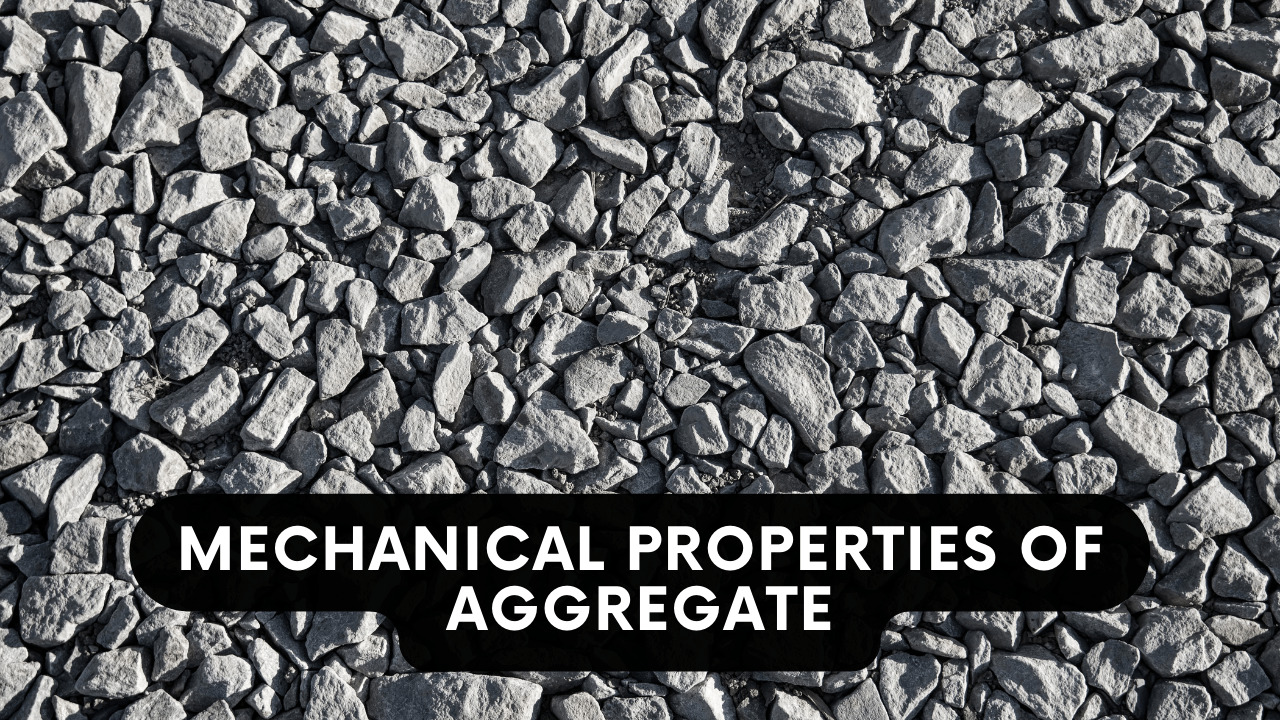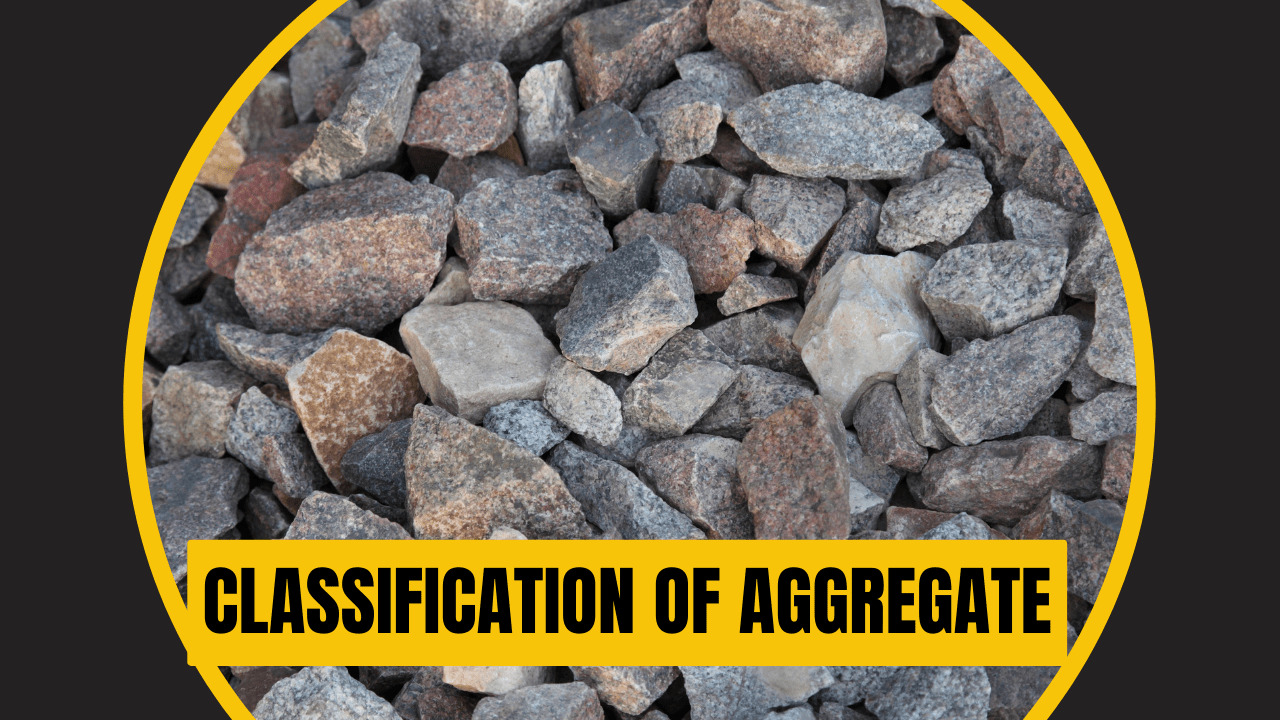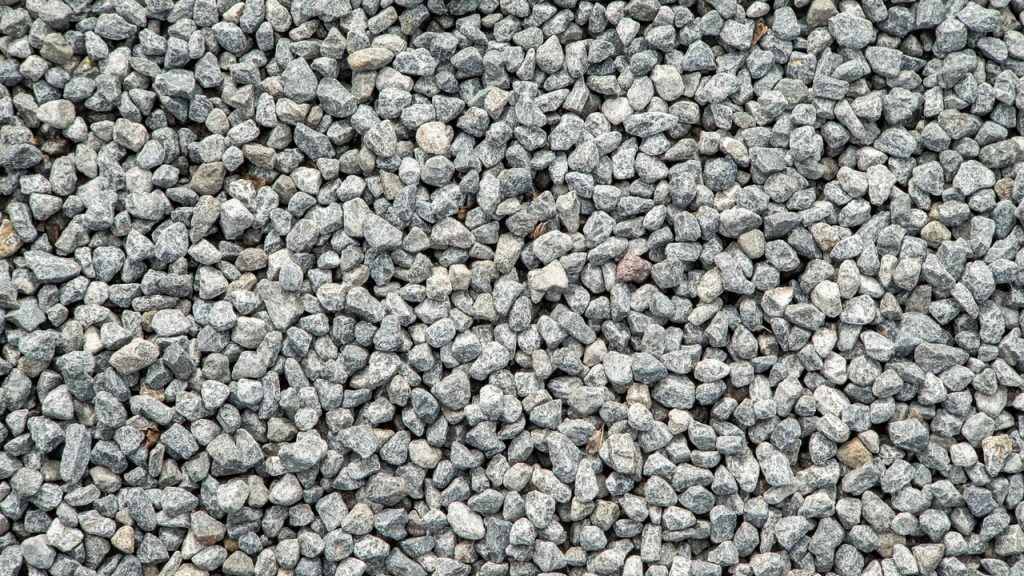When dealing with concrete, the aggregates are the materials that are inert in nature and impart strength to the mix. However, the overall concrete strength and shrinkage properties as well as its workability lean on the gradation of aggregates used, be it fine aggregates or coarse aggregates.
The word gradation, in general, means ‘range or spectrum’. In particular, ‘gradation of aggregates’ is used to describe the particle size distribution or the particle size range available in the aggregate mass. This is also termed as ‘sieve analysis’ or ‘gradation analysis’.
Table of Contents
Types of Gradation
Aggregate gradation is of 4 types as explained below:
1.Well-Graded:
An aggregate sample is said to be well-graded if it possesses all the required sizes in the required proportions. In other words, such a sample has a wide range of particle sizes present in the mix.
 Fig. 1: Well-graded Aggregate Sample
Fig. 1: Well-graded Aggregate Sample2.Gap-Graded:
A gap-graded or skip-graded sample has some sizes missing in the mix and therefore, is never preferred in preparing concrete for construction purposes.
Fig. 2: Gap-graded Aggregate Sample
3.Uniformly-Graded:
Such a sample contains particles all of which are of the same size. A problem with using such a sample is that the inter-particle spaces are left unoccupied.
Fig. 3: Uniformly-Graded Aggregate Sample
4.Poorly-Graded:
Such a sample has all the required aggregate sizes but not in the required proportions.

Fig. 4: Poorly-Graded Aggregate Sample
Sieve Analysis
In order to determine the relative proportion of different particle sizes available in an aggregate mix, sieve analysis or gradation test is to be performed. In this test, the sieves are arranged in descending order of their opening sizes and are stacked over each other as shown in Fig. 5.

Fig. 5: Stack of Sieves
The aggregate mix is poured on the top most sieve and the stack is given a shake. The weights retained on each sieve are then recorded and the gradation curve can be plotted on a semi-logarithmic scale. The following table shows some sieve designations commonly used along with the opening sizes (opening per linear inch).
Table 1: Commonly used sieves
| Designation | Opening (mm) | Designation | Opening (mm) |
| 2 in. | 50.8 | #35 | 0.5 |
| 1 1/2 in | 38.1 | #40 | 0.425 |
| 3/4 in | 19 | #50 | 0.355 |
| 3/8 in | 9.51 | #60 | 0.25 |
| #4 | 4.75 | #70 | 0.212 |
| #8 | 2.36 | #80 | 0.18 |
| #10 | 2 | #100 | 0.15 |
| #14 | 1.4 | #120 | 0.125 |
| #16 | 1.18 | #170 | 0.09 |
| #18 | 1 | #200 | 0.075 |
| #30 | 0.6 | #270 | 0.053 |
Any aggregate particle that retains of sieve #4 is called ‘coarse aggregate’. Coarse aggregates (also known as crushed stones) are majorly added in the concrete mix for strength gain purposes. They can be obtained by blasting heavy rock boulders. In Pakistan, we generally use Margalla Crush, Sargodha Crush and Sakhi Sarwar Crush

Fig. 6: Coarse Aggregates
Any aggregate particle that passes sieve #4 sieve and retains of #200 sieve is termed as ‘fine aggregate’. Fine aggregates (also termed as fillers) are added to fill up the voids created by the coarse aggregates. Sand is used as a filler material. In Pakistan, we generally use Ravi sand, Chenab sand and Lawrencepur sand for construction-related activities.
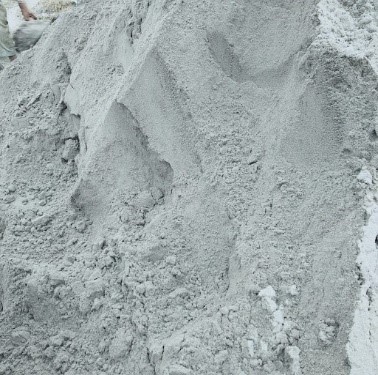
Fig. 7: Fine Aggregates
Grading Requirement as per ASTM Standard C33/C33M-18
The ‘American Standard for Testing and Materials’ (commonly known as ASTM) provides guidelines for gradation of aggregates so that the concrete mix made following the standard recommendations does not fall short of adequate workability, durability and strength.
However, it is to kept in mind that apart from gradation, the quality of aggregates used (evaluated through bulk density, water absorption, etc.) should also be as per standard specifications.
It is important to know that the compliance of a sample’s gradation with the standard is assessed through limiting gradation curves provided by the standard.
I)For Coarse Aggregates
The following table shows the acceptable proportion of various aggregates size ranges. It is to be noted that the standard has specified the upper limit as well as the lower limit of mass percentage of a particular size range.

Source: ASTM Standard C33/C33M
The second column in the table shows the aggregate size range that is always decided prior to use. For example, if we are to prepare a concrete mix using an aggregate sample that contains a maximum particle size of 63mm and a minimum particle size of 37.5mm, we’ll look through the second row and the values present in the columns will brief the proportion of a specific particle size.
Therefore, for coarse aggregates, the limiting gradation curves depend on the size range that we select for a particular construction work.
II)For Fine Aggregates
For fine aggregates, the gradation requirements are mentioned in the table below.

Source: ASTM Standard C33/C33M
For fine aggregates, we can easily plot the limiting curves, and they are shown in the following semi-logarithmic plot. An aggregate sample is said to comply with the standard and is classified ‘acceptable’ if the gradation curve of the sample lies in between the two limiting gradation plots.
An important thing to note is that gradation curves can also aid in determining the particle size/s that the sample is either devoid of or is deficient in. Knowing this, we can include the desired particles into the mix to achieve the standard’s acceptability criteria.

Why is Aggregate Gradation Important for a Concrete Mix?
A concrete mix essentially contains cement, coarse aggregates (crushed stones), fine aggregates (sand) and water. Cement plays the role of a binding agent, water acts as a lubricating agent (providing workability to concrete) and aggregates are the main constituents in-charge of the promised compressive strength.
When concrete is cast, the water evaporates and leaves behind empty pores that may stimulate shrinkage of concrete, thereby leading to early cracking. These pores can be minimized if a well-graded aggregate sample is used. Therefore, gradation of aggregates is essential not just for achieving the target strength but also for densifying the concrete and minimizing voids.
Concludingly, a compromise made on aggregate grading is likely to have a detrimental effect on the properties of concrete. Therefore, the ASTM code has foisted specifications on aggregate quality, the nominal maximum size and gradation.


